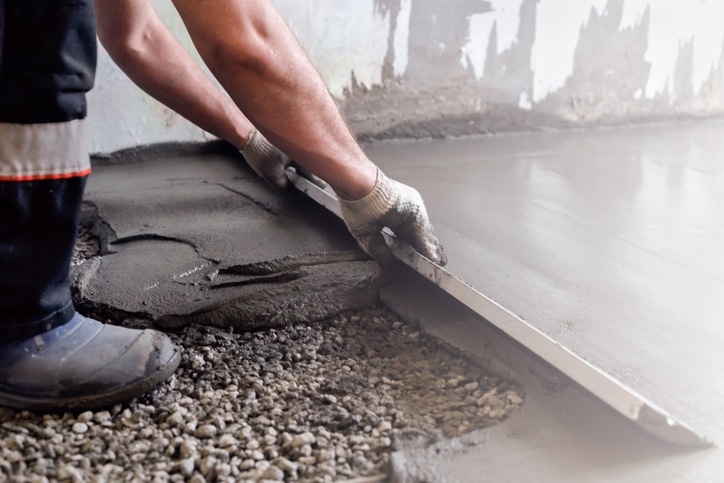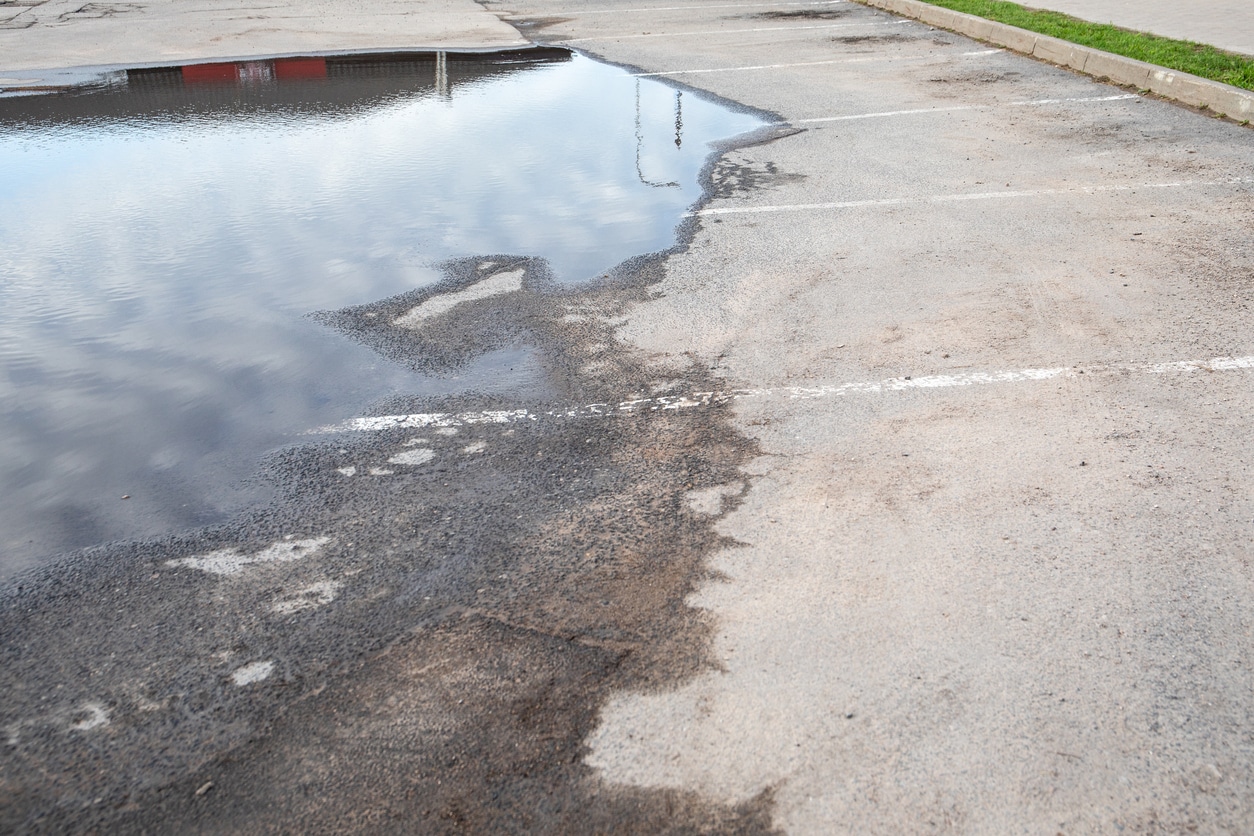If you're undertaking a retail or other commercial construction project, it's important to understand the…

Green Parking Lots Solve Multiple Problems for School Campuses
Many school campuses today have to deal with something that only used to be a problem in the downtown areas: a lack of parking spaces. It often results from an influx of visitors and migrants drawn to a city because of tourism or job opportunities.
On university campuses, they would be the parents, friends, relatives, contemplating applicants, academics, and locals visiting the students, scouting on-campus lodgings, or looking for research facilities.
They come daily, adding to the base population that consists of teachers, administrative and support staff, security personnel, utility services providers, and students.
Consider that the average percentage of students that bring their cars to campus is 46.8 percent. Now factor in the faculty and school workers who drive to work. Increase that number with the daily visitors to the campus, and it’s easy to see how cramped the parking areas could get.
The default solution would be to build more parking lots. It’s easier said than done, however. School grounds are limited, and there’s yet another problem that could emerge with the construction of more parking lots: underutilized land.
Green Parking Lots: Solving Problems on Disagreeable Aesthetics and Non-Sustainability
The popular argument against the construction of parking lots is that it makes little sense to develop land just for cars. Even with paid parking, huge parking lots seem to be an inefficient use of space that could be put to use for more meaningful purposes.
Green parking lots offer a compromise: the public gets an accessible and sustainable parking area that has the potential to be more. These lots reduce the environmental impact of conventional concrete while being low-maintenance. There is no definite blueprint for green parking lots, but many of them share the following features:
- Trees line the parking rows, not just the perimeter of the lot.
- Shrubs and ornamental plants line the walkways and dividers.
- There’s an efficient stormwater plan that collects and irrigates water to the surrounding vegetation.
- Permeable pavers make up the entire lot.
If these are what it takes for parking lots to become eco-friendly and sustainable, what can be done for traditional, open-air parking areas made entirely of concrete that don’t have trees or grassy strips? There are actually a lot, and school campuses can certainly adopt them.
Ways to Achieve Sustainability in Parking Spaces
Whether brand-new or existing, parking spaces can be designed to become sustainable and offer advantages to people, the planet, and a school’s profits.
- Multi-level parking building – This structure addresses the matter of space inefficiency as it can accommodate multiple vehicles in every six-by-three meters of parking space. Campuses can provide new parking spaces without consuming acreage that could be used as green spaces or for constructing new academic buildings. With proper planning, they can even convert a multi-level parking structure into a mixed-use building and generate income from commercial rent.
- Underground parking garage – Similar to multi-level parking, underground garages increase parking spaces but not at the expense of land for non-parking use. This option, however, has plenty of limitations and considerations before it can be executed. Contractors must verify the local building codes and the structural integrity of the building. They must also have solid plans to ensure proper ventilation, lighting, entrances, emergency exits, fire protection, and human and vehicle traffic management.
- Landscaping – A cost-effective alternative, landscaping can make parking lots more sustainable and solve a few more problems on the side. Flower and shrub beds, for example, improve the aesthetics of the general area. They also serve as stormwater reservoirs, preventing parking lots from flooding during the rainy season. Campuses can also install turf block pavers or remove concrete slabs and fill the space with dirt and grass.
- Tree-scaping – Planting trees can take landscaping aesthetics up several notches as trees can provide much-needed shade in open-air parking lots. They can reduce the “heat island effect” that’s all too common in all-concrete lots.
Concrete absorbs heat from the sun and retains the energy throughout the day. As a result, the immediate surroundings become warmer than the actual temperature. Trees also improve air quality, complement the esthetics of adjacent establishments, and provide greenery in an otherwise all-concrete landscape.
- Solar panels for shade – Many establishments all over the country are now getting positive press and praise from environmental organizations for maximizing parking lots by installing solar panels over the parking spaces. These canopies have three purposes: to provide shade for the parked cars, reduce the heat island effect, and generate electricity to power the utilities in the venue. Below are some of the establishments that thoughtfully built solar panel parking lots:
- Cincinnati Zoo
- Rutgers University
- The Washington Redskins Stadium’s Platinum A1 FedEx Field parking lot
- The Cal Expo in Sacramento, California
- The California Department of Franchise Tax Board
- Rancho Cucamonga
- Three government offices in San Bernardino County
Truth: There’s No Eliminating Parking Lots
 There’s currently a lot of buzz around the merits of parking spaces, and whether cities should reduce them to make way for infrastructure or housing. It’s easy to see why: recent studies revealed that many US cities have more parking spaces than necessary. Among the five cities that were the subjects of a study by the Mortgage Bankers Association’s Research Institute for Housing America (RIHA), New York is the only one where there are more houses than parking spots. These are the facts even though a drive through the main streets of Kansas City, Los Angeles, or Jackson would make one feel otherwise.
There’s currently a lot of buzz around the merits of parking spaces, and whether cities should reduce them to make way for infrastructure or housing. It’s easy to see why: recent studies revealed that many US cities have more parking spaces than necessary. Among the five cities that were the subjects of a study by the Mortgage Bankers Association’s Research Institute for Housing America (RIHA), New York is the only one where there are more houses than parking spots. These are the facts even though a drive through the main streets of Kansas City, Los Angeles, or Jackson would make one feel otherwise.
It won’t do the public much good to eliminate parking lots. Even if everyone suddenly gives up conventional transport and rides bikes everywhere, we will still need lots where people can safely park those bikes.
That being said, a lot can be done to maximize parking lots; and as luminaries, schools and universities would be well-placed to improve the way they build and manage these spaces.
DIA:Beacon Museum a Model for Green Parking Lots
We cannot speak about green parking lots without mentioning the parking lot at DIA: Beacon Museum in Beacon, New York. The lot is integrated into the museum’s gardens; it commands just as much attention the art attractions scattered inside and outside the building.
The drive leading to the parking area has an ample-sized, concrete sidewalk on one side and a grassy slope that leads to the gardens on the other. The parking spots are diagonal and grouped in twos, alternating with low islands — each of which boasts a fully-grown Hawthorne tree. The result is a parking grid with every spot shaded by gorgeous flowering trees that turn red in autumn. The metal-edged islands draw rainwater away from the concrete surfaces, and the runoffs flow straight to the adjacent grass lot and garden.
DIA:Beacon checks out on many of the US Environmental Protection Agency (EPA)’s best practices for green parking lots:
- Stormwater management
- Runoff reduction (essential for the impervious surfaces of concrete lots)
- Proper parking placement
- Landscaping
- Rain garden installation
- Tree shade or cover (reduces heat island effect and counters the excessive carbon dioxide and diesel emissions from the vehicles)
- Green space preservation and creation
School campuses can use DIA:Beacon’s parking lot as a blueprint for transforming their existing parking lots. The EPA’s Green Parking Lot Resource Guide can also provide extra tips and guidance. Below are some examples:
- Build parking lots at a slope to manage and filter runoff.
- Make concrete parking slots more eco-friendly by lining the walkways with concrete grass blocks, interlocking pavers, or gravel. This is to improve the aesthetics and also manage stormwater runoffs.
- Ensure car space dimensions are just right for the average vehicle, and not too big that the slots are too few considering the size of the entire lot.
- Provide parking facilities for bicycles and scooters to promote eco-friendly transportation alternatives.
- Build vegetated filter strips or infiltration trenches inside the boundary of the parking lot, especially if the property is near a body of water.
- Use permeable soil for the filter strips and infiltration trenches to make them more effective at filtering washed-off pollutants.
One Problem Solved, Many Benefits Reaped
This article focused on the advantages of green parking lots and providing tips that school campuses can adopt. If you look closely, all of the examples and tips mentioned above can also offer solutions to issues unrelated to the environment.
- Ensure that campuses have green spaces that create a healthy environment for students.
- Create a beautiful lot that complements the school’s architecture and is conducive to learning.
- Improve the air quality in the campus.
- Reduce the ambient heat during summer.
- Ensure pedestrian safety.
- Passively manage foot traffic within and beyond the parking lot.
- Provide the campus with additional income streams.
- Provide the campus with alternative outdoor spaces for extra-curricular activities.
- Promote a sense of community.
As you explore all available options for developing green parking lots on your campus, you may want to consult professional builders who specialize in the construction of parking lots, among other things. K&E Flatwork LLC will be happy to advise you on how to optimize your existing parking areas. We can also provide our concreting services if a new parking lot is in the works.
Get in touch with K&E Flatwork LLC today.




This Post Has 0 Comments